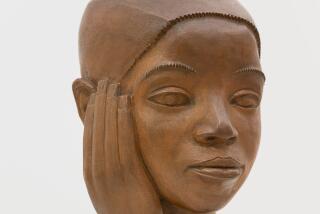Uncommon Clay by Burke Wilkinson (Harcourt Brace Jovanovich: $22.95; 408 pp., illustrated)
The last quarter of the 19th Century was a happy time for both artists and the public, for they agreed, for the most part, on what “art” was. This blissful state lasted until World War I, when the strains in society reflected themselves in the split of the avant-garde movement from the artistic establishment.
Before the split, major artists were national heroes: Rodin and Bouguereau in France, Millais and Leighton in England, Boecklin and Lehnbach in Germany, and William Merrit Chase and the sculptor Augustus Saint Gaudens in America.
In this era of great and self-assured personalities, Augustus Saint Gaudens hobnobbed with the best: Robert Louis Stevenson was his intimate, Henry Adams a traveling companion, and Theodore Roosevelt hosted him at the White House, where they discussed the national coinage. Saint Gaudens collaborated with the best American artists of the time: He worked on projects with the architects Henry H. Richardson, Charles McKim and, above all, Stanford White. And his clients were among the most famous and powerful people of the Republic.
Burke Wilkinson’s “Uncommon Clay” is the second popular biography of the sculptor within two decades. However, it does not replace the first, Louise Hall Tharp’s “Saint-Gaudens and the Gilded Era” (Little, Brown, 1972). Tharp had a better command of the period (not to speak of his English) and her handling of the material is less superficial.
Wilkinson is a novelist as well as a practiced biographer; we expect him to bring the artist alive for us, with some depth of feeling (he does, but only in the final chapters), and we expect him to develop the background of the late 19th Century in New York with skill and clarity. And we also expect some newer sources to be tapped, to justify a new biography.
The new sources are there: Wilkinson knows more about Saint Gaudens’ lifetime mistress, Davida, including her hitherto unpublished last name, Clark (she remains nonetheless a shadowy figure), and he uses letters and manuscript material ignored or unacknowledged by Tharp.
What needs explanation and clarification is not Saint Gaudens’ understandable personality, nor his standard “success story” career, nor even his successful maintenance of a family and a mistress for decades, but his sculpture. The relief portraits are attractive enough, but the monuments themselves--even the great “General Sherman” before the Plaza Hotel in New York City--seem stilted and dated to most modern viewers. We admire these monuments, but we are not thrilled.
Were his contemporaries? Did they see elements we find aesthetically disturbing--the love of detail, the implied narrative, the long inscriptions, the impersonal objectivity, the learned use of Florentine classicism combined with contemporary realism--as unified parts of an aesthetic experience? The answer is that of course they did. Help in understanding their point of view would help us understand the sculpture.
Wilkinson not only doesn’t help us with such matters, he confuses. When discussing the various versions--marble, bronze, clay--of some works, he rhetorically asks “which is the original?” A bogus question in 19th-Century sculptural practice. The “original”--that is, the first work of the artist’s hand--is usually lost in the process of producing the marbles and bronzes. Our concern should be for the “authenticity” of a version: Was it produced under the control of the artist?
But help is here. A grand Saint Gaudens exhibition is taking place at the Metropolitan Museum in New York until Jan. 26; Boston, Feb. 26-May 11. The excellent catalogue by Kathryn Greenthal for the exhibition does explain Saint Gaudens’ works, his methods and his aesthetics; the artist and the modern public are getting together.
More to Read
The biggest entertainment stories
Get our big stories about Hollywood, film, television, music, arts, culture and more right in your inbox as soon as they publish.
You may occasionally receive promotional content from the Los Angeles Times.










